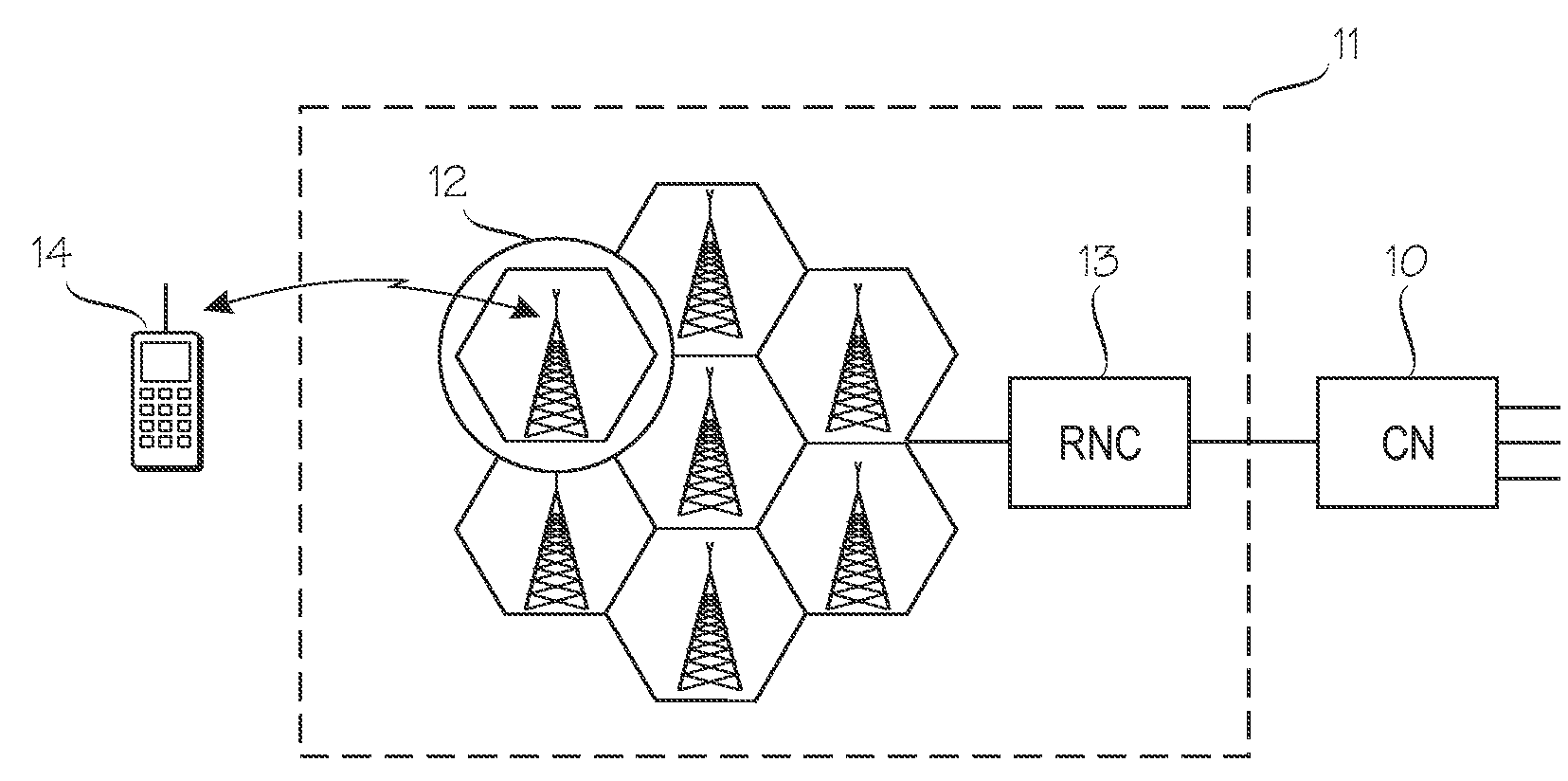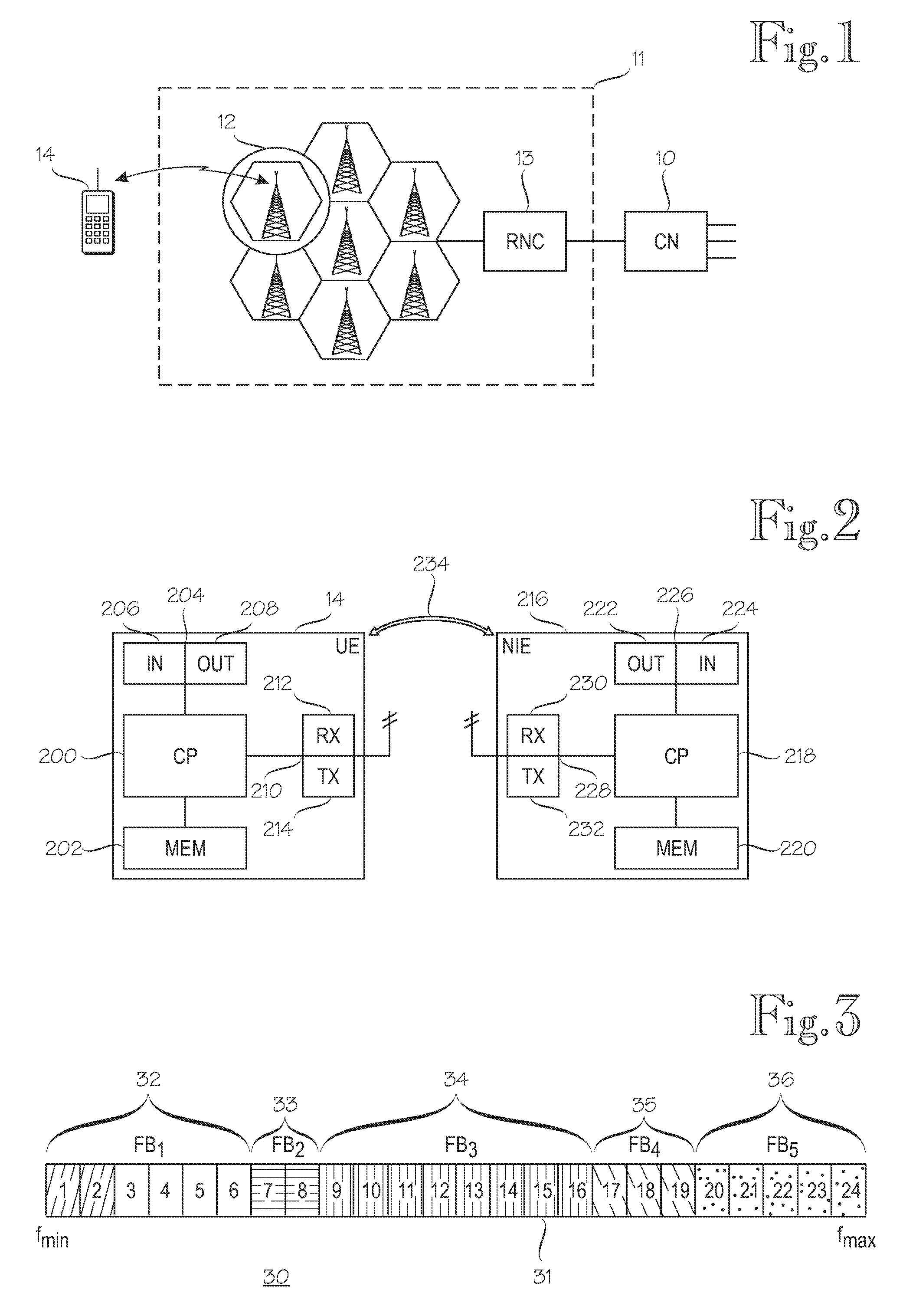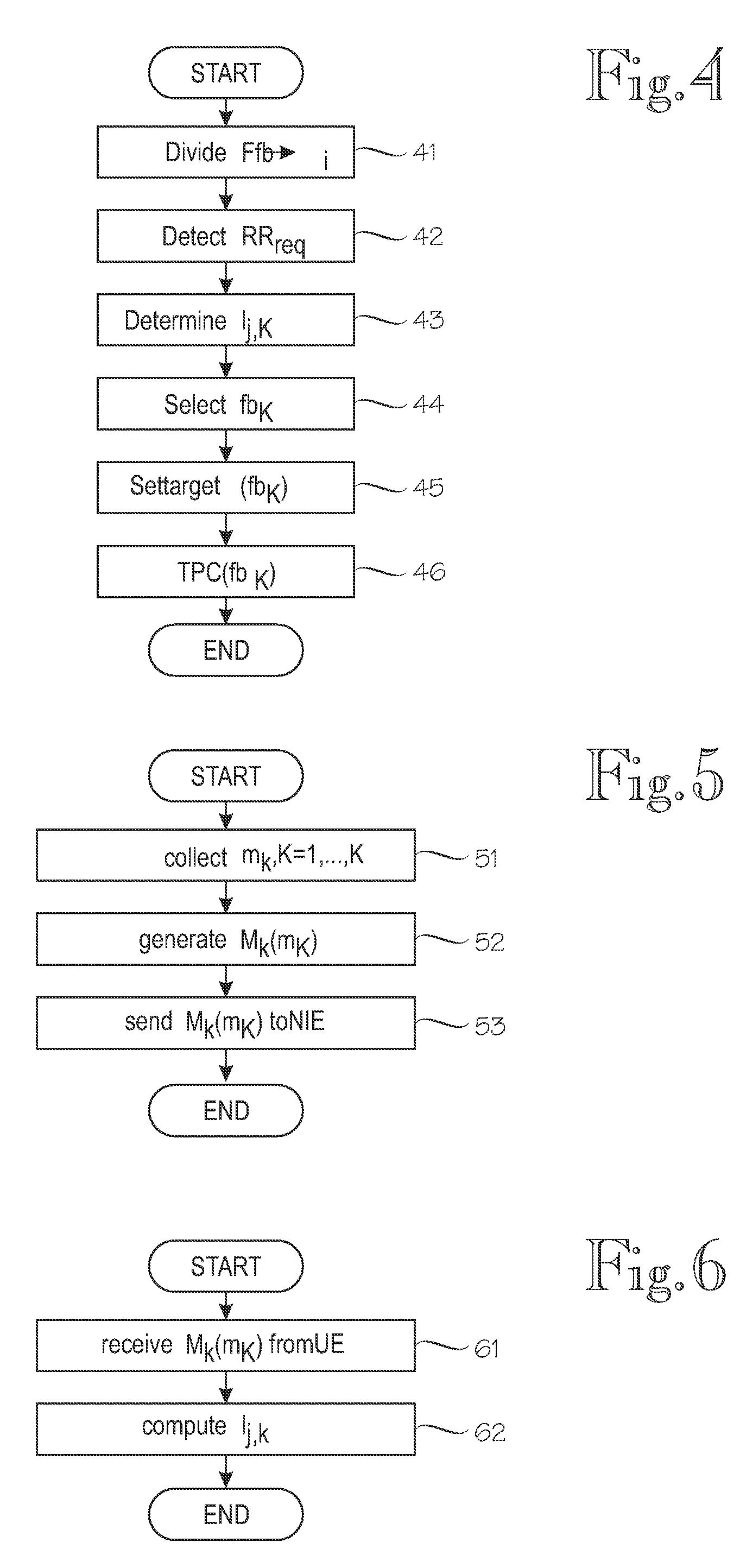Radio resource allocation mechanism
- Summary
- Abstract
- Description
- Claims
- Application Information
AI Technical Summary
Benefits of technology
Problems solved by technology
Method used
Image
Examples
Embodiment Construction
[0024]The following embodiments are exemplary implementations of the present invention. Although the specification may refer to “an”, “one”, or “some” embodiment(s), reference is not necessarily made to and / or a described feature does not apply to only one particular embodiment only. Single features of different embodiments of this specification may be combined to provide further embodiments that are thus considered to belong to the scope of protection.
[0025]FIG. 1 illustrates a simplified example of a cellular communications system to which the present solution may be applied. The system of FIG. 1 is a mobile communication system that comprises a number of wireless access points through which users may connect to the network and thus utilize the communication services of the system. In the following, the invention is described with base station cells of a mobile communications system, where the access point may change when users are moving within the service area of the systems. It...
PUM
 Login to View More
Login to View More Abstract
Description
Claims
Application Information
 Login to View More
Login to View More - R&D
- Intellectual Property
- Life Sciences
- Materials
- Tech Scout
- Unparalleled Data Quality
- Higher Quality Content
- 60% Fewer Hallucinations
Browse by: Latest US Patents, China's latest patents, Technical Efficacy Thesaurus, Application Domain, Technology Topic, Popular Technical Reports.
© 2025 PatSnap. All rights reserved.Legal|Privacy policy|Modern Slavery Act Transparency Statement|Sitemap|About US| Contact US: help@patsnap.com



